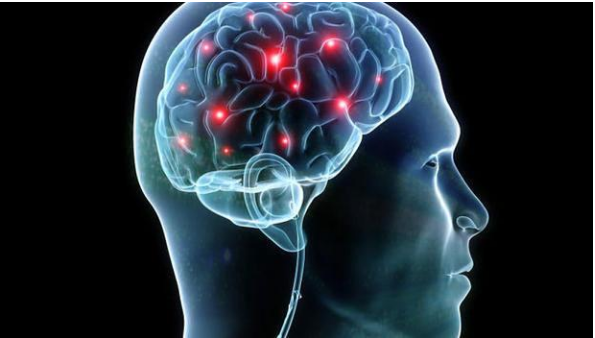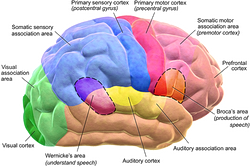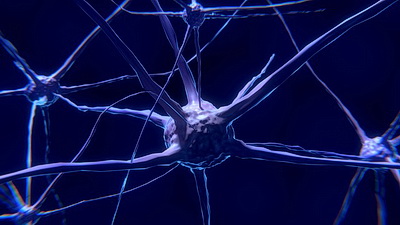
You may have heard in science class or in a casual conversation that we use only use 10% of our brain. People are often quoted saying “Imagine what you could achieve if you used the full capacity of your brain.” However, this is a myth that is even incorrectly attributed to scientists such as Albert Einstein.
Facts and Figures
While the exact percentage we use is not certified, the brain is a powerful and intricate organ which allows its host to perceive and control his/her functions. Its potency can be gleaned from the fact that certain individuals are blessed with an eidetic memory. This is known as the ability to vividly recount images and settings exactly as they were, almost with surgical precision.
Another interesting fact is that it is the largest brain in all vertebrates relative to its body size. This fantastic organ houses 86 billion neurons or nerve cells and are actually immune to pain, despite man’s ability to develop a headache.
Functions of the brain
No one will doubt that the brain is a marvel of evolution, so let’s delve into the discipline of biological psychology to better understand its principal functions. Biopsychology is the branch of psychology that studies the brain in relation to its central functions and how its neurotransmitters and other biological factors influence human behavior.

The human brain is an integral component of the central nervous system, which also includes the spinal cord. It consists of nerve tissues that govern the activity of our bodies. The outer region of the brain is called the cerebral cortex. This informs the cognitive, sensations and emotions of a person, which is yet another reason why the brain is such a vital organ.
A fully functional brain consists of four main lobes, which are listed below:
-
-
- Frontal lobe
This portion enables humans to exhibit motor skills, express language, and perform cognition. - Occipital lobe
The occipital lobe is responsible for translating visual mediums into discernible information. - Parietal lobe
This is the part that involves the sensibilities of a person. The sense of pressure, touch, and pain are processed in this component of the human brain. - Temporal lobe
The fourth and final sector of the brain is the temporal lobe, which interprets the sounds and languages we hear. It also handles the memory of the person.
- Frontal lobe
-

Neurons
Neurons are highly specialized cells that are the fundamental building blocks of life. They receive and distribute information from one part of the body to another through neural pathways that are built as new information is acquired.
Neurotransmitters
The way information travels through the neural pathways is known as neurotransmission. Chemical messengers are involved in the transmission of signals from one cell to another. This is how we interpret data and as we concentrate on more information, the neurotransmitters build more pathways so that we can successfully process the new information.
Science suggests that there are more than a hundred cells that perform this act of transmission. We can highlight some of the pertinent neurotransmitters, their effects, and potential disorders they are linked with it.
-
-
- Acetylcholine
This is connected to memory, muscle movement, and the ability to learn. A shortage of acetylcholine may result in Alzheimer’s disease. - Dopamine
Dopamine is intrinsically linked to the thought process and feelings of a person. A lack of dopamine has been known to cause Parkinson’s disease and Schizophrenia. In case of scarcity, doctors recommend drugs to induce greater activity in the brain. - Endorphins
A commonly heard term is endorphins, which revolves around emotions and the sensation of agony a person feels. When an individual experiences apprehension, their body releases endorphins in response.
- Acetylcholine
-
Link to the Endocrine system
Suffice it to say, the anatomy of the human body is vast and complex. Any given part of the body functions in tandem with several other parts to inform the behavior of a person. The central nervous system is strongly linked to the endocrine system. The endocrine system includes the hormones and glands which transmit these into the circulatory system.
A network of neurons enables the movement of signals from the brain to various parts of the human body. The nervous system is comprised of almost a trillion of these neurons. They represent an intricate and regulated network.
The nervous system interacts with the endocrine structure in the human body in different ways. The brain consists of a portion called the hypothalamus. It is significant because it connects both the nervous and endocrine systems respectively. It is a small collection of nuclei that essentially control behavior.
They can be found in the front of the brain, towards its base, and coordinate basic requirements of the body, such as hunger, thirst, sleep, and sex. Additionally, it also manages the emotional and stress-related responses in humans, thus underlining how crucial it is to the body. These are essentially the two main functions of the hypothalamus.
Facts and Figures
Whether concise or extensive, we have discussed many attributes of the brain and what functions they perform. Our deliberation has included the cerebral cortex, four lobes, and the hypothalamus as well. We can now focus on the remaining aspects of the human brain.
Cerebellum
First up is the cerebellum. Called the little brain informally, it receives signals from the ears, nerves, and auditory and visual systems. It makes up nearly a tenth of the entire size of the brain and also monitors a person’s motor movements such as posture and balance.
Limbic system
The limbic system is next. It includes regions like the amygdala, hippocampus, septal area, and parts of the limbic cortex. Together, they connect with the aforementioned constituents such as the cerebral cortex and hypothalamus.
Basal ganglia
Finally, the basal ganglia are a combination of nuclei that envelop the thalamus. These are also involved in the movements a person makes.
In conclusion, we can gather that the brain is an unbelievably intricate organ. However, its significance cannot be overstated. We only need to look at the number of parts of the brain that influences our movement or our feelings to know that this complex organ is actually a well-oiled machine.
